Soviet and American specialists began to think over various projects on the creation of lunar bases at the dawn of the space age, even before Gagarin’s flight. The very first of them had a pronounced militaristic orientation. For example, the Horizon project, developed in the late 1950s, involved the construction of a launch pad for American nuclear missiles on the Moon.
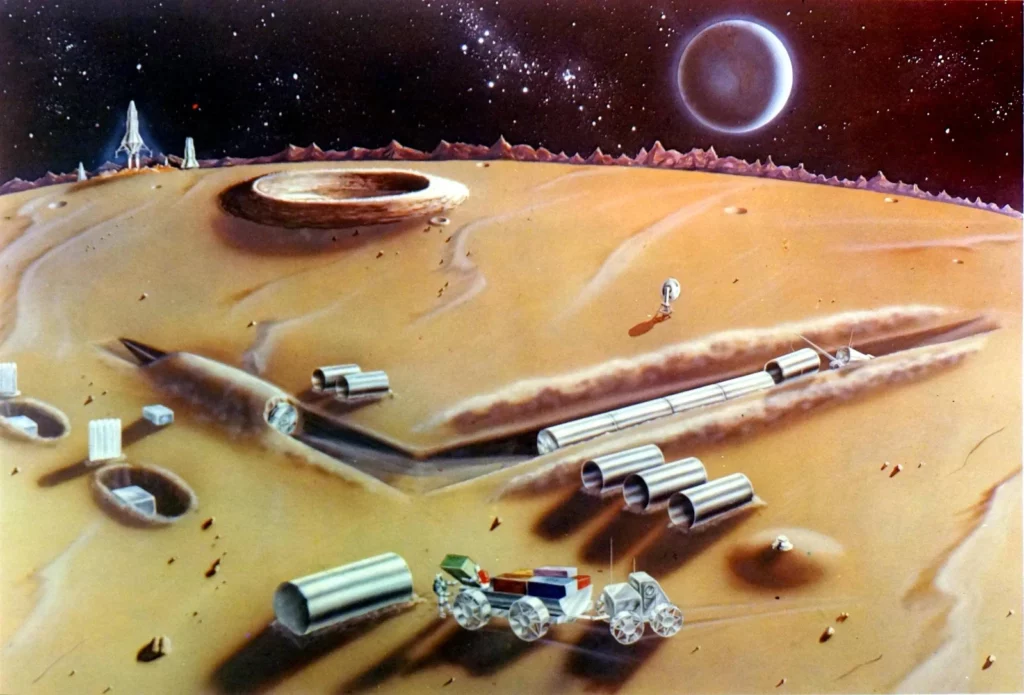
Fortunately, the military quickly realized that placing nuclear weapons on the Moon was not quite practical, and lost interest in such ideas. Therefore, all subsequent settlement projects were exclusively peaceful. One of them was developed within the Apollo program. Few people remember it now, but since the very beginning people were not planning to limit themselves with short-term visits to the Moon. The next step was to create a permanent settlement. To do this, NASA considered developing a modified version of Apollo or building a completely different ship with a larger cargo capacity. Using it, it was planned to deliver a residential module to the surface of the Moon, designed for a three-month stay of two people. In the future, other compartments would be added to it, which would allow the number of crew to be increased to 6 people.
But the implementation of such a project required numerous additional launches of the Saturn V rocket. After assessing the potential costs, Congress decided that America could not afford such a luxury. Therefore, all plans to create a lunar base were canceled even before Neil Armstrong took his small step.
There were similar ideas in the USSR as well. Thus, Volodymyr Barmin developed Zirka project which included delivering a “train” to the Moon — a combination of residential, service and energy modules installed on the chassis of a lunar rover. The unusual vehicle would be used by Soviet cosmonauts to survey the terrain and select the optimal location for a permanent lunar settlement. According to Barmin’s idea, it was supposed to consist of nine cylindrical blocks and was designed to lodge 12 people.

Unfortunately, this idea, like the Apollo lunar base, remained only on paper. There were two good reasons for this. The first is the failed test of the H1 super-heavy rocket, which was supposed to deliver base modules to the Moon. The second is cost. The estimated cost of Zirka was more than 50 billion rubles. The Soviet economy, overloaded with military expenses, simply could not afford a project of this scale.
It took more than 40 years for lunar settlements to be discussed again. The American Artemis project and the Chinese lunar program set the creation of permanent bases on the Moon as their main task. We can also mention the Moon village initiative. This is the open settlement concept proposed by ESA. It is supposed that any participants will be able to join — states and private companies as well as non-profit organizations. It is assumed that the Moon village will contribute to the development of international cooperation and become a starting point in the development of our natural satellite.
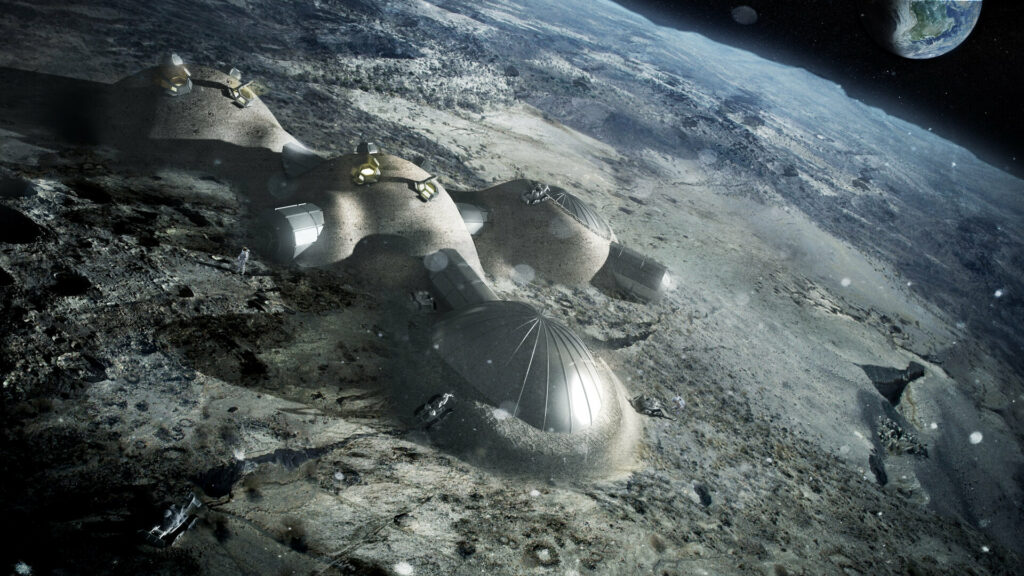
Undoubtedly, in recent years, humanity has made great progress in space expansion. Therefore, modern plans for the creation of lunar settlements are much more realistic than during the Apollo era. However, this does not mean that colonizing the Moon will be a cake walk. To achieve success, the designers have to cope with many challenges and find the answer to a number of important questions, one of which is the search for the most optimal location for the base.
Choosing the construction site on the Moon
Apparently, the first base will be built on the south pole of the satellite. It is this region which is considered the center of operations by the USA, China and Europe. There are a number of reasons for this. Automatic stations have collected a lot of data that many polar craters, whose bottoms are never illuminated by the Sun, contain deposits of water ice. Colonists could use it to extract drinking water, oxygen, and obtain rocket fuel components.

One of the most attractive points on the South Pole of the Moon is the twenty-kilometer crater Shackleton. The axis of rotation of the satellite passes through it. Most likely, it is this strike formation that will be the landing site of the Artemis III mission planned for 2024.
If we talk about the North Pole, the most interesting is the Peary crater. Four mountainous regions on its edge are illuminated by the Sun during almost the entire lunar day, which makes them an excellent place for placing solar power plants. At the bottom of the same crater there are cold traps that probably contain rich deposits of water ice.
Another advantage of the polar location of the base is a stable temperature regime in permanently shaded areas. Thus, the settlement at the bottom of the polar crater will be protected from sharp temperature fluctuations.
Despite all the advantages of the lunar poles, they are not the only possible place for the placement of an inhabited outpost. Lava tubes passing under the lunar surface are also suitable for this purpose. The tube arch itself is a good screen capable of protecting the settlement from micrometeorites, radiation and sharp temperature fluctuations. During the construction of the base on the pole, the residential modules will either have to be buried under the surface or covered with an additional protective layer.
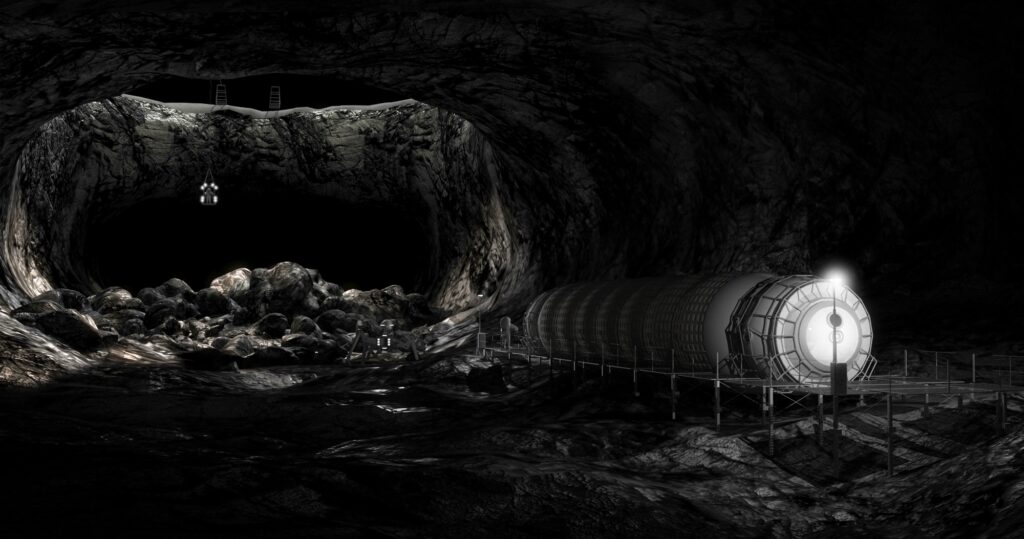
In addition, large structures can be placed inside lava tubes. Theoretically, lunar settlers could even seal and then fill their individual sections with air, having a large amount of free space at their disposal. Another advantage of lava tubes is their distribution in many regions of our satellite, which can be a crucial factor when commencing commercial mining of minerals on the Moon.
According to many scientists, the most valuable resource of our satellite is helium-3. It can be used as fuel for thermonuclear reactors. But the largest deposits of this element are located near the lunar equator, where, of course, there are no craters with deposits of water ice. But you can find lava tubes there capable of accommodating the entire necessary infrastructure.
To all of the above, it is worth adding that the lack of water ice in other regions of the Moon is an inconvenience but not the insurmountable obstacle. The fact is that the regolith contains a large amount of oxygen in a “bound” state (in the form of oxides). Scientists have conducted experiments demonstrating that it can be released using electrochemical reactions. This process has a very interesting side effect: after removing oxygen from the regolith, a mixture of metals remains, suitable for producing various alloys. So it is quite likely that factories producing oxygen and building materials may appear on the Moon in the future.
Energy supply of a lunar house
The next important issue is energy supply. After all, it is not enough to build a base — it must also be provided with energy.
Almost all spacecraft use solar panels. They are cheap, relatively light, reliable and safe. Unfortunately, things are not so simple on the Moon. Energy generation using solar panels is impossible by night, and nights on the Moon are 14 Earth days long.
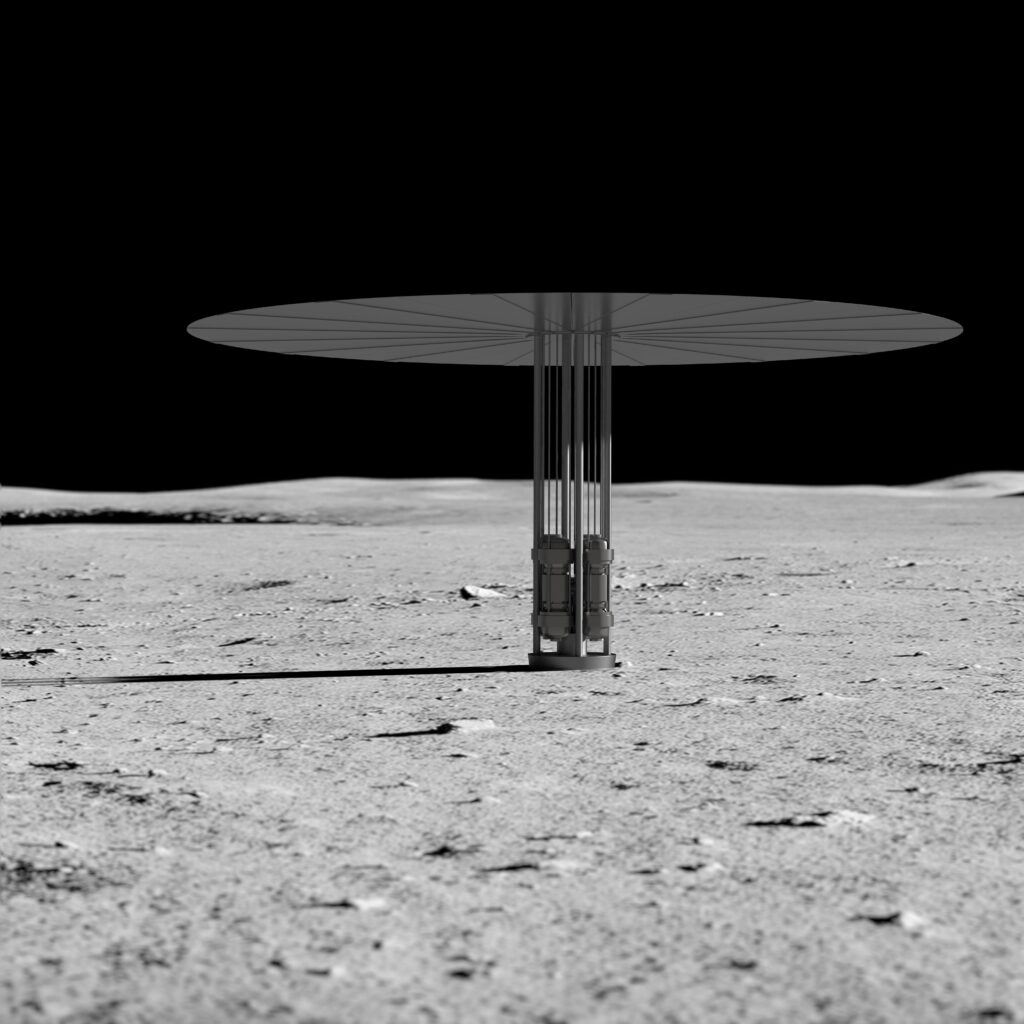
Compact nuclear reactors will come handy here. NASA already has a project of such a power plant capable of operating in open space. In 2017-2018, the Aerospace Administration in alliance with the US National Nuclear Security Administration conducted joint tests of the KRUSTY (Kilopower Reactor Using Stirling Technology) reactor prototype. As a fuel, it uses enriched uranium-235, and the conversion of heat into electricity is carried out using a Stirling engine on a sodium coolant. The calculated power of KRUSTY, depending on the modification, should be from 1 to 10 kW.
According to NASA, the test was successful. Specialists conducted several tests, during which they checked the complete cycle of the reactor — from its start to a complete shutdown. Variants with failure of various systems and equipment were also worked out. Tests showed that even in the worst-case scenario with multiple failures, the reactor remained controllable.
Nuclear reactors are not the only possible option. Bases at the Moon’s poles could receive energy from solar power plants located on the peaks of eternal light — areas that are almost always illuminated by the Sun. This is possible due to the fact that Moon’s axis is tilted only slightly. Parts of the shafts and some central elevations of the largest polar craters remain lit almost all year round. The pictures taken by the automatic stations allowed scientists to identify a number of promising places at the North and South Poles, suitable for placing power plants.
The main problem is the transfer of the collected energy to the bottom of the crater. For this, you can use microwaves or laser radiation. Recently, ESA allocated money to develop the PHILIP (Powering rovers by High Intensity Laser Induction on Planets) project. It is proposed to send two experimental devices to the south pole of the Moon: a stationary platform that will be installed on the edge of the crater in the zone of eternal light, and a small rover. The platform will be equipped with an infrared laser designed to transmit energy collected by solar cells. The mobile device is equipped with a photoelectric converter. The platform will send a laser beam to the rover providing it with energy to explore the bottom of the crater.
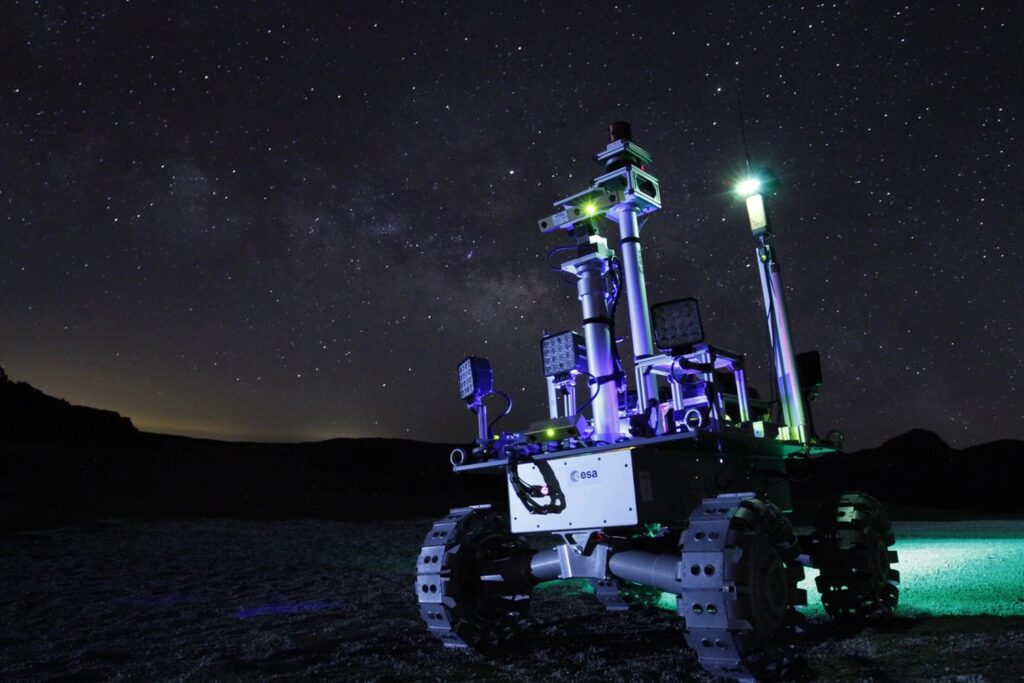
And, finally, there is a possible option of equipping lunar bases with alkaline fuel cells. They produce electricity as a result of a chemical reaction involving hydrogen and pure oxygen. Similar fuel cells were once installed on Apollo and space shuttle reusable ships. Perhaps they will be applied in the new Moon program as well. The settlement could receive energy from solar panels by day and from fuel cells by night. They can also be used as a backup power source in case of any damage or accident.
Building materials for a lunar base
Early projects of lunar settlements suggested the installation of metal compartments on the surface of the satellite, like those used to create orbital stations. But, unfortunately, it is not so simple. Of course, it is possible to modify such designs, but it all depends on the price. Today, the cost of delivering a kilogram of payload to the Moon is measured in five- or even six-digit numbers. If humanity really wants to get a foothold on Earth’s natural satellite, it needs to find a way to radically reduce costs.
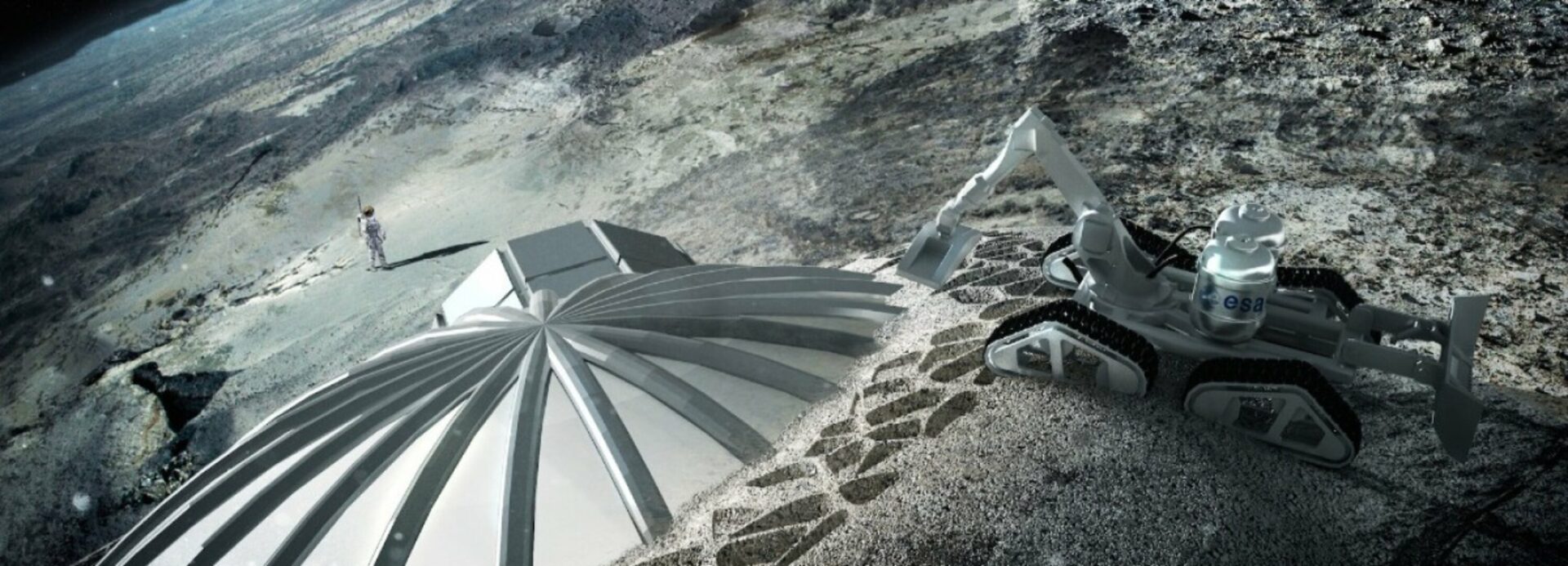
One of the most interesting possibilities is the use of inflatable modules such as the BEAM compartment, which has been successfully operated on the ISS for several years. They have less weight and can provide a larger internal volume compared to traditional all-metal designs. Inflatable modules can be placed both on the surface (covered with a layer of regolith for reliability) and inside the lava tubes.
The next part of the strategy to reduce costs should be an approach where everything that lands on the surface of the moon can be used for the construction of settlements and economic activities. For example, SpaceX is going to follow such a strategy. The company is currently developing a lunar modification of the Starship designed for the needs of the Artemis program. According to Elon Musk, this ship will become not only a means of delivering goods and people, but also a temporary home. After landing, the Starship will be used as a habitation module during the construction of the main settlement, and then as a backup base.
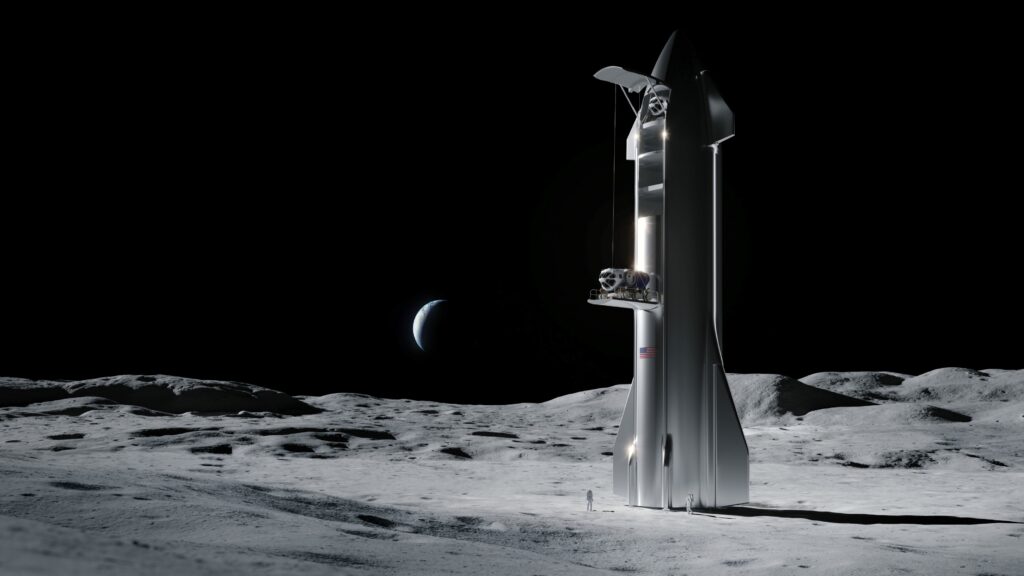
Nevertheless, the main way to reduce costs is to bet on the widest possible use of the resources that can be mined on the Moon. And we are not only talking about deposits of water ice. Lunar soil could become a valuable source of building materials. A recent study by Azimut Space and ESA showed that monolithic bricks can be made from regolith using a 3D printer, that may be used not only for the construction of buildings, but also for solving the problem of heat preservation. The results of the experiments show that regolith bricks are able to accumulate energy, which can then be used to heat indoor spaces.
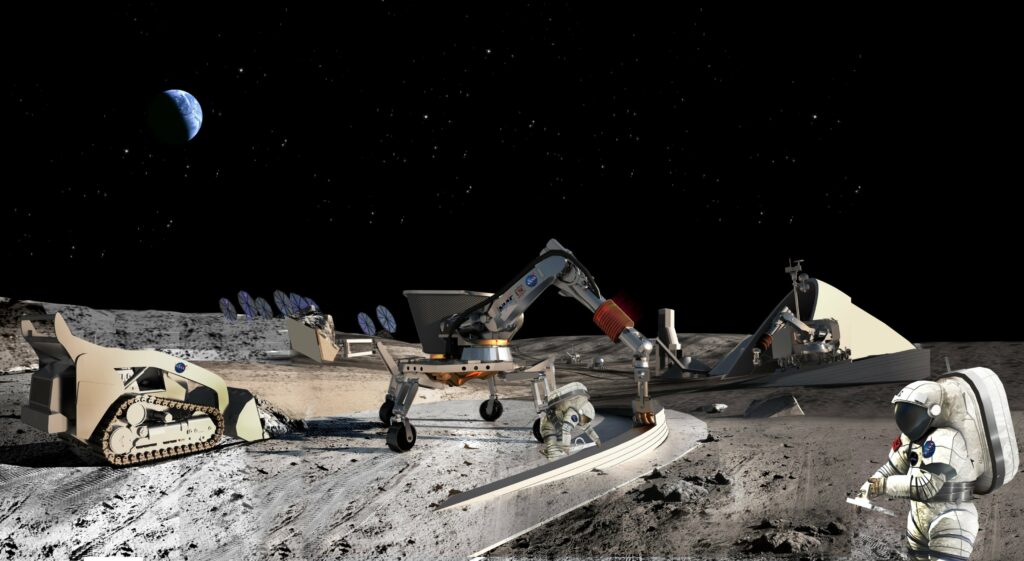
It is worth noting that the capabilities of 3D printers are not limited to the production of basic building materials. They can also be used to create other components of the lunar base, such as solar panels, protective screens or load-bearing structures. So in the future, 3D printing can completely revolutionize the process of developing our natural satellite. Instead of shipping a large amount of equipment and materials to the Moon, it will be enough to deliver a few printers there and create everything necessary on the spot.
Cleanliness and safety in a lunar house
The last important challenge for the creators of lunar lodgings is preserving health of its inhabitants.
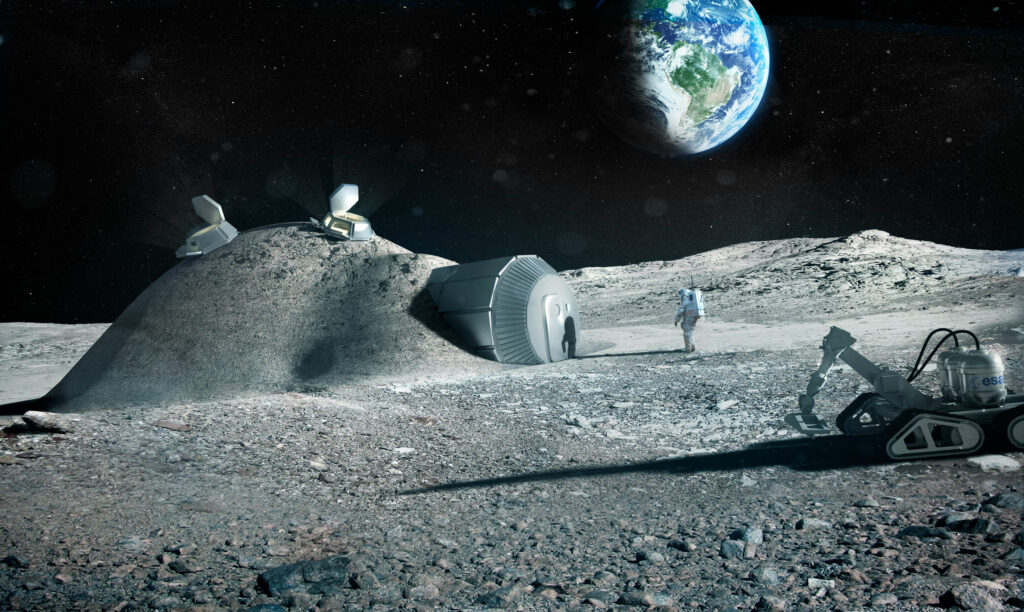
During the years of operation of the ISS, scientists have collected a lot of information about the adaptation of the human body to the conditions of a long stay in weightlessness. But how applicable is this data to future lunar settlers? Most likely, reduced gravity on the Earth’s natural satellite is better for the body than complete weightlessness. However, this is only a guess. Only after the appearance of permanent settlements on the Moon will we know how a long stay there will affect people.
Another important aspect is the increased level of radiation. The Moon has neither an atmosphere nor a magnetic field, so its surface is constantly bombarded by a stream of charged particles. Fortunately, they generally do not have a high penetrating power and protection against them is not an insoluble issue. At the same time, don’t forget about solar flares, which can in a very short period of time cause doses of radiation dangerous to human health. To prevent such situations, future settlers will need regular space weather forecasts from observatories that monitor the activity of our star.
And finally, you can’t ignore moon dust. At the dawn of cosmonautics, there was an assumption that the surface of our satellite was covered with a multi-meter layer of dust accumulated over millions of years. Some scientists expressed fears that a spacecraft attempting to land on the Moon would simply “sink” there.

Fortunately, the hypothesis turned out to be wrong. But lunar dust is a really serious threat. The fact is that it consists of small and at the same time extremely sharp particles (because there is no water and atmosphere on the Moon capable of smoothing them), which have a powerful abrasive effect. They can be dangerous not only for mechanisms, but also for people.
Lunar dust caused a lot of trouble back in the days of the Apollo expeditions. It polluted the optics of the devices and damaged the spacesuits. And due to the electrostatic effect, its particles easily stuck to shoes and equipment — they could not be simply shaken off. It is not surprising that the astronauts returning to the lunar module constantly brought dust with them. As a result some of them had eye irritation, some — sinusitis and Harrison Schmitt had an allergic attack.

For the Apollo crews, contact with lunar dust was short-term, so there were no noticeable health consequences. But during a long stay on the Moon, everything can be different. Experts warn that regular inhalation of dust can cause serious lung damage and eventually cause cancer. It is possible that lunar settlers may even develop their own occupational disease, something like miners’ disease.
Therefore, scientists are already thinking about ways to fight dust. Most likely, the modules of the lunar bases will be equipped with special filter systems designed to clean the air. They may have to be equipped with special electrostatic “showers” to remove dust from the spacesuits. So, before entering the house the lunar settlers will have to wipe their feet well and clean their clothes — just like earthlings do it on their own planet.

